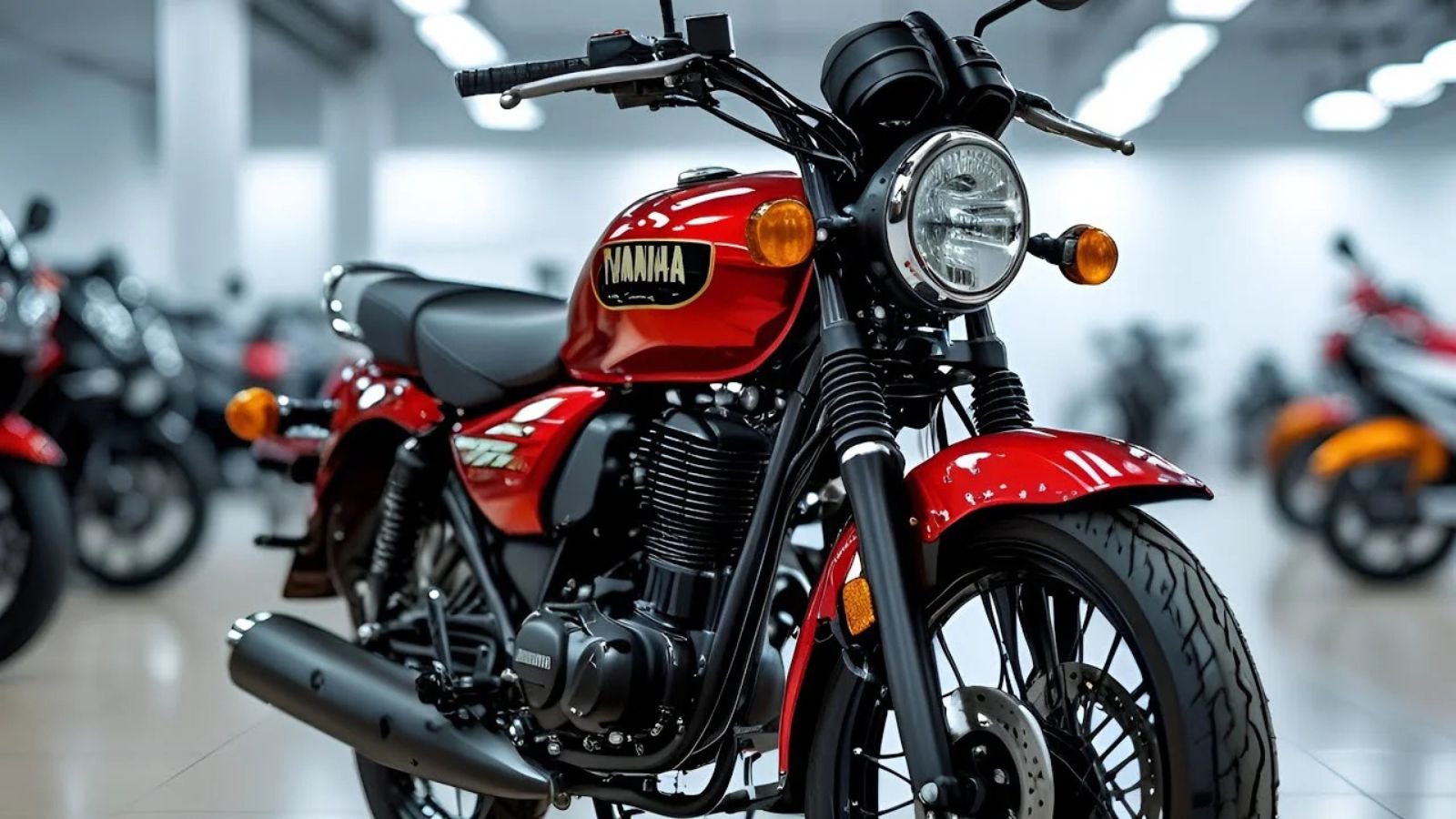The Yamaha RX100 is not just a motorcycle; it is an enduring symbol of speed, simplicity, and soul. Revered by generations of motorcycling enthusiasts, the Yamaha RX100 ruled Indian roads from the mid-1980s until the mid-1990s, and even today, it maintains a cult-like status. Riders from every corner of India, from college-goers of the past to vintage collectors today, share a deep emotional bond with this bike. With a legacy built on thrilling performance, distinctive sound, and a design that stood the test of time, the Yamaha RX100 is undoubtedly a legend. Let’s explore in depth what made—and continues to make—this two-wheeled icon so special.
Yamaha RX100: Key Highlights
| Feature | Details |
|---|---|
| Engine | 98cc, air-cooled, 2-stroke |
| Power | 11 HP (approx.) |
| Gearbox | 4-speed manual |
| Weight | Around 100 kg (lightweight) |
| Top Speed | 100 km/h (approx.) |
| Brakes | Front & rear drum brakes |
| Fuel Efficiency | 25-30 km/l (varies with tuning) |
| Suspension | Telescopic forks (front), Swingarm (rear) |
| Production Years | 1985–1996 (Discontinued) |
| Legacy | Cult classic, known for raw power |
Yamaha RX100: The Birth of a Legend
The Yamaha RX100 made its debut on Indian roads in 1985 and instantly became a phenomenon. At a time when most motorcycles were sluggish and utilitarian, the Yamaha RX100 brought performance, style, and fun into the equation. It redefined what a 100cc motorcycle could do. The engine was a 98cc, 2-stroke powerhouse that produced approximately 11 horsepower—a remarkable figure for its time. But what truly set the RX100 apart was its exceptional power-to-weight ratio.
At just around 100 kilograms, the Yamaha RX100 was incredibly lightweight. This made the bike exceptionally nimble and gave it blistering acceleration. Riders fondly remember the adrenaline rush of twisting the throttle and feeling the immediate surge of power. It was this unmatched responsiveness that gave the RX100 its racing DNA.
Yamaha RX100: A Sound Like No Other
Ask any RX100 owner what they miss most, and chances are they will mention the exhaust note. The Yamaha RX100 had a distinctive, raspy exhaust sound that could be heard from a distance. This two-stroke symphony wasn’t just loud; it was deeply satisfying to the ear. It gave the RX100 a strong personality—you didn’t just see the RX100 coming, you heard it first.
The unique sound signature wasn’t a coincidence. It was the result of the bike’s tuned exhaust system and high-revving engine. For many, the sound of the Yamaha RX100 represents nostalgia, freedom, and raw power all in one note.
Yamaha RX100: Design That Defined an Era
In terms of design, the Yamaha RX100 struck a perfect balance between simplicity and sportiness. Its compact fuel tank, flat seat, minimalistic side panels, and exposed frame gave it a raw, mechanical charm. The upright handlebars and round headlamp reinforced its retro appeal.
Despite its minimalistic design, the RX100 looked purposeful and aggressive. The bold graphics and chrome accents added just enough flair without going overboard. Even by today’s standards, the Yamaha RX100 holds a strong visual identity that turns heads and evokes admiration.
Yamaha RX100: Performance and Ride Quality
The performance of the Yamaha RX100 was nothing short of revolutionary in the 100cc category. With its 4-speed manual transmission and responsive engine, the RX100 could easily clock a top speed of about 100 km/h. But it wasn’t just the speed that impressed riders. It was how quickly the bike got there.
The acceleration was crisp, and the bike offered strong mid-range performance—ideal for overtaking in city traffic or having fun on open roads. The suspension setup, consisting of telescopic front forks and twin rear shock absorbers, ensured a comfortable ride even on rough terrain.
The drum brakes at both ends, although basic by today’s standards, were more than adequate for the lightweight frame and moderate speeds of the RX100. Riders appreciated the bike’s intuitive handling and the confidence it offered during spirited rides.
Yamaha RX100: Low Maintenance and High Durability
One of the major reasons for the Yamaha RX100’s widespread appeal was its ease of maintenance. The bike had a simple mechanical structure, which meant that most repairs and services could be done without any specialized tools or training. Spare parts were widely available and affordable during its prime years.
Even today, many RX100 enthusiasts restore and maintain their bikes using aftermarket and refurbished parts. The engine’s robustness, when cared for properly, ensures longevity. It’s not uncommon to find Yamaha RX100 bikes from the 80s and 90s still running smoothly on Indian roads.
Yamaha RX100: A Racing Legacy
The Yamaha RX100 wasn’t just a commuter bike; it became a weapon of choice in amateur racing circuits across India. Its high-revving two-stroke engine and lightweight chassis made it ideal for drag races and short track competitions.
Many riders modified their RX100s with expansion chambers, larger carburetors, and tuned ports to extract even more performance. These modifications allowed the bike to outperform many larger-capacity motorcycles in timed sprints. For many, the RX100 was their first taste of motorsports.
Yamaha RX100: Collector’s Delight
In today’s era of advanced technology and electric motorcycles, the Yamaha RX100 stands as a nostalgic reminder of a time when riding was all about raw experience. Collectors and vintage bike enthusiasts often go to great lengths to find and restore old RX100s. A fully restored RX100 can fetch prices upwards of ₹1.5 lakh in today’s market, depending on its condition and originality.
The bike’s retro appeal, combined with its rich legacy, makes it a must-have for enthusiasts. Owning a Yamaha RX100 today is not just about commuting; it’s about preserving a piece of motorcycling history.
Yamaha RX100: Frequently Asked Questions
Why was the Yamaha RX100 discontinued?
The RX100 was discontinued in 1996 primarily due to the introduction of stricter emission regulations. Two-stroke engines, though powerful, emitted more pollutants compared to their four-stroke counterparts. Yamaha had to phase out the RX100 to comply with these norms.
Is the Yamaha RX100 still available for purchase?
Yamaha no longer manufactures the RX100, but used models are available in the pre-owned market. Many sellers offer restored or modified versions. However, prices can be steep depending on the bike’s condition and originality.
Can the Yamaha RX100 be used as a daily commuter today?
Technically, yes. If maintained properly, the RX100 is still capable of daily use. However, finding genuine spare parts can be challenging, and its fuel efficiency is lower compared to modern bikes.
What makes the Yamaha RX100 a legend?
Its lightning-quick acceleration, unique exhaust note, minimalist design, and emotional connection with riders make the RX100 a legend. It was a trendsetter that offered unmatched performance in its class.
Also read: $135 Million Dimes
Will Yamaha ever relaunch the RX100?
There have been rumors and speculations about a modern Yamaha RX100, possibly with a four-stroke engine. However, no official confirmation has been made. A true revival would need to balance modern emission standards with the original RX100’s spirit.
Conclusion: The Immortal Yamaha RX100
The Yamaha RX100 is more than a motorcycle. It is a legacy, a memory, and an icon of motorcycling freedom. Even after nearly three decades since its production ended, it continues to inspire loyalty and admiration. For those who rode it in its prime, the RX100 was a rite of passage. For today’s youth, it’s a symbol of vintage cool and unmatched performance.
Whether you own one, dream of owning one, or simply admire its legacy, the Yamaha RX100 remains one of the most cherished motorcycles in India’s biking history. With a presence that transcends generations, the Yamaha RX100 truly deserves its place in the hall of legends.
If you ever come across a Yamaha RX100 in pristine condition, consider yourself lucky—you’re looking at a masterpiece that defined an era.
Some Important Link
| Telegram Group | Click Here |
| WhatsApp Group | Click Here |
| Home Page | Click Here |
$2,500 Cash App Class Action Settlement 2025, Check Payment Date & Status













